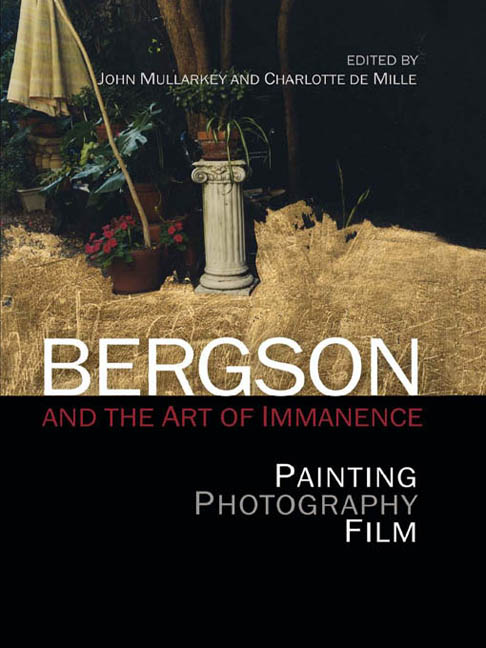Afterword: An Art Historical Return to Bergson
Published online by Cambridge University Press: 07 December 2017
Summary
That an effort of this kind is not impossible, is proved by the existence … of an aesthetic faculty along with normal perception.
What we're after certainly isn't any return to Freud or return to Marx. Nor any theory of reading. What we look for in a book is the way it transmits something that resists coding: flows, revolutionary active lines of flight, lines of absolute decoding rather than any intellectual culture.
‘A Return to Bergson’ is the title of Gilles Deleuze's famous afterword for the English translation of Bergsonism (1966). Written more than twenty years after the book's initial publication, the afterword is itself another opening, another invitation to return to Bergson that extends his project today. As Deleuze writes, this renewal or extension is undertaken ‘in relation to the transformations of life and society, in parallel with the transformation of science’. These well-known lines express Deleuze's methodology of ‘return’, his history of philosophy as repetition and masquerade. Hence his singular ‘Bergsonism’ is a method that prioritises concepts inherent in Bergson's own texts such as multiplicity, the virtual, becoming and immanence; yet they are transformed in Deleuze's appropriation of them. What Deleuze demonstrated was that a return neither recollects some putative origin nor shores up an author-function. Instead, it always involves a radical untimeliness, an event. Any return worth its salt ‘dissipates the temporal identity where we like to look at ourselves to avoid the ruptures of history’.5 Deleuze's ‘return’ to Bergson allowed him to render new lines of thought that traversed the history of philosophy, offering alternatives to structuralism, phenomenology and psychoanalysis.
So what kind of challenge is the call for an art historical return to Bergson? First and foremost, it is a challenge to accept that there has yet to be an art historical methodology that is truly Bergsonian. Undoubtedly the first steps of such a visual, cultural, theoretical and historiographic ‘return’ to Bergson are to be found within this anthology.
- Type
- Chapter
- Information
- Bergson and the Art of ImmanencePainting, Photography, Film, Performance, pp. 260 - 271Publisher: Edinburgh University PressPrint publication year: 2013



